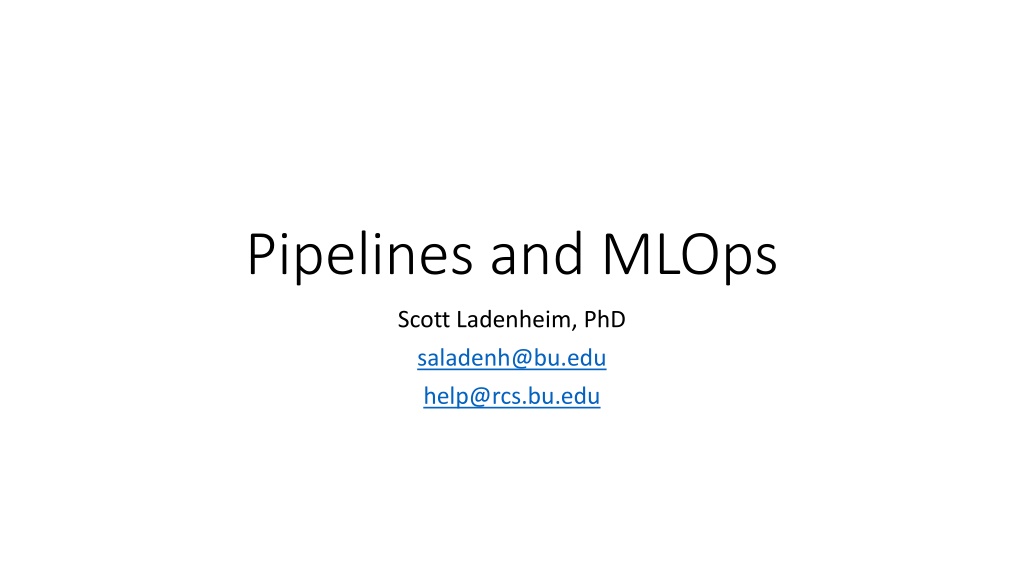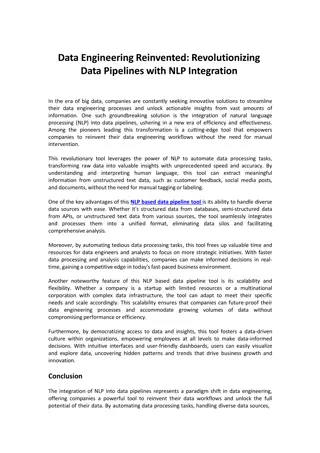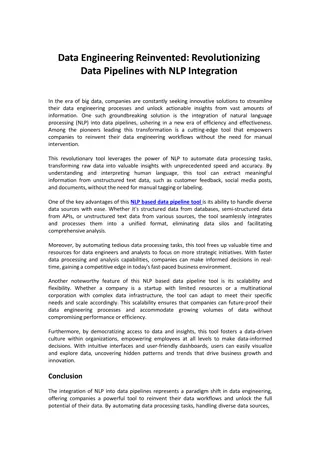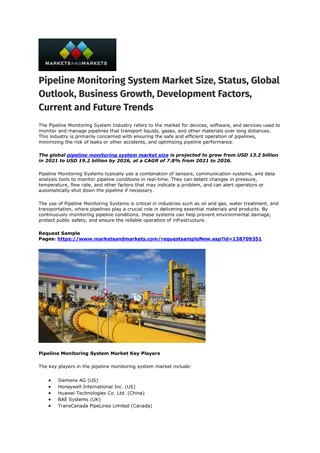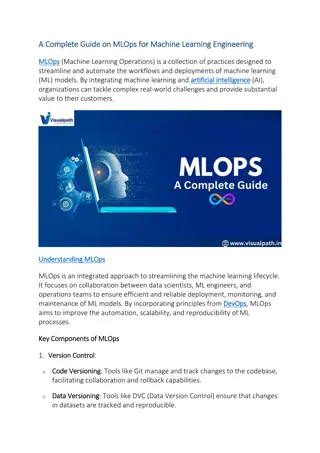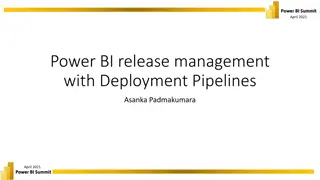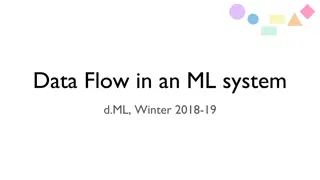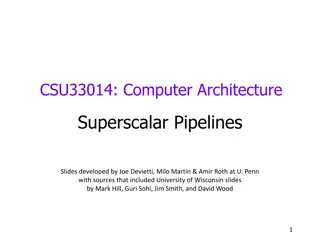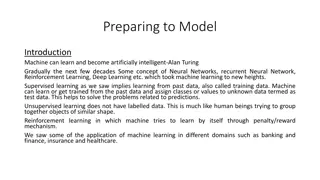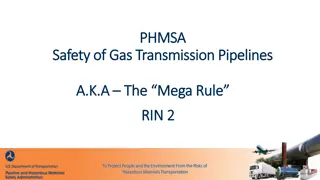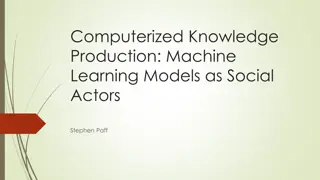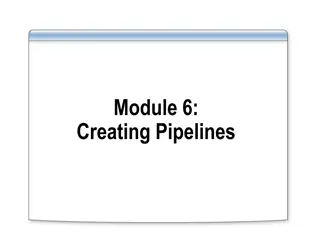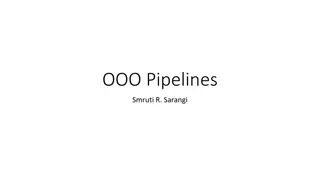Understanding Data Pipelines and MLOps in Machine Learning
Data pipelines and MLOps play a crucial role in streamlining the process of taking machine learning models to production. By centralizing and automating workflows, teams can enhance collaboration, increase efficiency, and ensure reproducibility. Tools like Luigi, Apache Airflow, MLFlow, Argo, Azure MLOps, and Amazon Sagemaker help in task orchestration, monitoring, validation, and governance throughout the machine learning life cycle. These tools enable tracking experiments, packaging ML code, managing and deploying models efficiently across various ML libraries. Embracing these practices fosters better collaboration and accelerates the development and deployment of models.
Download Presentation

Please find below an Image/Link to download the presentation.
The content on the website is provided AS IS for your information and personal use only. It may not be sold, licensed, or shared on other websites without obtaining consent from the author. Download presentation by click this link. If you encounter any issues during the download, it is possible that the publisher has removed the file from their server.
E N D
Presentation Transcript
Pipelines and MLOps Scott Ladenheim, PhD saladenh@bu.edu help@rcs.bu.edu
Outline Data Pipelines MLOps MLFlow
Data pipelines Data lake Processing ML model Database Streaming Data consumers Data producers
Machine learning life cycle Gather/clean data Evaluate model Train model
As size of team and solution (e.g. ML model and input data) grows so does the number of repetitive tasks The goal is centralized, repeatable, reproducible, and efficient workflows For software you have CI/CD tools which automatically test and deploy code called DevOps With ML we have a more complex process and CI/CD is one component of this Task orchestration
Pipelines vs Task Orchestration Pipeline Task orchestration A A B B C D C F E D G E
MLOps Machine Learning Operations A fancy task orchestration for machine learning The idea is to streamline the process of taking machine learning models to production Better collaboration to increase the pace of model development and deployment Includes CI/CD but also Monitoring Validation governance
Luigi (https://github.com/spotify/luigi) -- Spotify Apache Airflow (https://airflow.apache.org/) AirBnB MLFlow (https://mlflow.org/) Argo (https://argoproj.github.io/) Azure MLOps (https://azure.microsoft.com/en- us/products/machine-learning/mlops/) Amazon Sagemaker (https://aws.amazon.com/sagemaker/?nc=sn&loc=0) Tools for task orchestration https://www.datarevenue.com/en- blog/airflow-vs-luigi-vs-argo-vs-mlflow-vs- kubeflow https://hevodata.com/learn/luigi-vs-airflow/ https://towardsdatascience.com/data- pipelines-luigi-airflow-everything-you-need- to-know-18dc741449b7
MLFlow Track experiments to record and compare parameters and results Packaging ML code in reusable, reproducible form in order to share with other data scientist or transfer to production Managing and deploying models from a variety of ML libraries such as scikit-learn and pytorch Provides a central model store to collaboratively manage the full lifecycle of an Mlflow model Library agnostic can be used with any programming language since all functions are accessible through a REST API
MLFlow to track Hyperparameter optimization Hyperparameters a tunable parameter in the network Optimization routine Learning rate Betas for Adams Number of epochs Minibatch size We will work through an example of logging models with different hyperparameters Notebook is `MLFlowHyperparameter.ipynb` at http://rcs.bu.edu/classes/MSSP/sp23/MLFlow/
